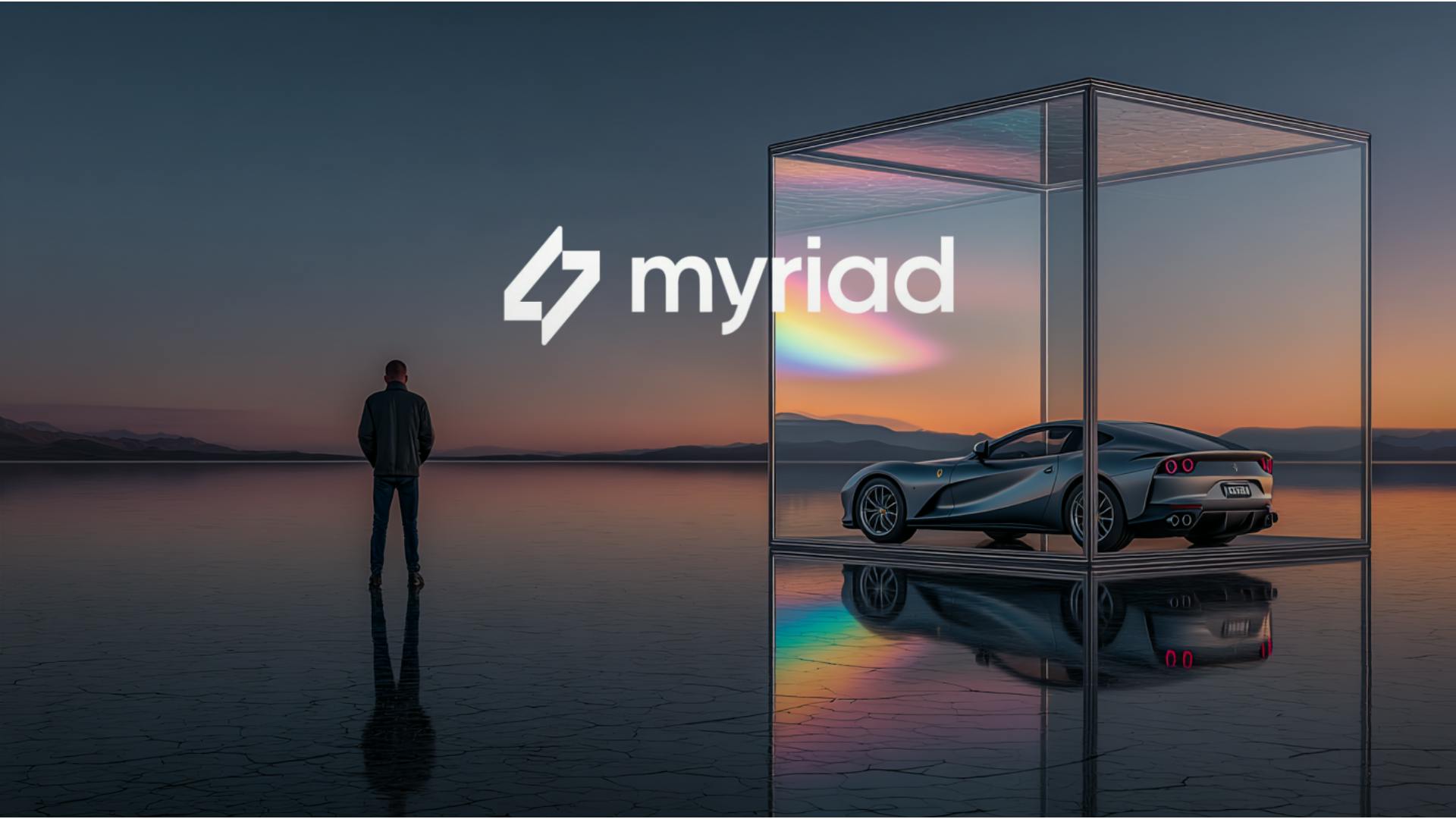Most designers, photographers, videographers, and other creative professionals use Macs, so they’ll at least consider the Apple Studio Display when shopping for a monitor. But this venerable panel, which debuted in 2022, faces competition from a growing array of offerings from Acer, Asus, BenQ, and others.
I’ve been rigorously testing monitors and many other tech devices at PCMag for more than a decade. Below, I’ll pit the Studio Display against a recent contender that I just reviewed, the Asus ProArt Display OLED PA32UCDM. I’ll look at what these two powerful, creator-centric displays have in common and what features in each stand out, and explore their suitability for use by both Windows and Mac users.
Price: Expect to Spend $1,500 and Up
The base price for the Apple Studio Display is $1,599. Adding an anti-reflective coating to the 27-inch screen will cost you $300 extra. For its base price, the Studio Display comes with either a stand or VESA-mounting hardware for wall- or arm-mounting the monitor. The basic stand, although well machined, supports only tilt adjustment; to add height adjustment to the mix, it will cost you $400 more. (This is an improvement over the Apple Pro Display XDR, whose base model does not include a stand at all. For that $4,999 monitor, Apple charges $1,000 for the optional Pro stand, and the anti-glare coating will set you back another grand.)
3.5
Good
What Our Ratings Mean
- 5.0 – Exemplary: Near perfection, ground-breaking
- 4.5 – Outstanding: Best in class, acts as a benchmark for measuring competitors
- 4.0 – Excellent: A performance, feature, or value leader in its class, with few shortfalls
- 3.5 – Good: Does what the product should do, and does so better than many competitors
- 3.0 – Average: Does what the product should do, and sits in the middle of the pack
- 2.5 – Fair: We have some reservations, buy with caution
- 2.0 – Subpar: We do not recommend, buy with extreme caution
- 1.5 – Poor: Do not buy this product
- 1.0 – Dismal: Don’t even think about buying this product
Read Our
Editorial Mission Statement
and
Testing Methodologies.
Apple Studio Display
The Asus ProArt Display OLED PA32UCDM is priced at $1,899, but that is all-inclusive. Its stand supports height, tilt, and pivot adjustment, and it has a larger (32-inch) screen. Still, you can get the Studio Display for about $300 less than you’d pay for the Asus, and neither of the additional-cost options I’ve mentioned is critical for most users. (Even the standard Studio Display screen has an anti-reflective coating; the nano-texture glass option further enhances this, and is most useful when using the monitor in brightly lit areas.)

4.0
Excellent
What Our Ratings Mean
- 5.0 – Exemplary: Near perfection, ground-breaking
- 4.5 – Outstanding: Best in class, acts as a benchmark for measuring competitors
- 4.0 – Excellent: A performance, feature, or value leader in its class, with few shortfalls
- 3.5 – Good: Does what the product should do, and does so better than many competitors
- 3.0 – Average: Does what the product should do, and sits in the middle of the pack
- 2.5 – Fair: We have some reservations, buy with caution
- 2.0 – Subpar: We do not recommend, buy with extreme caution
- 1.5 – Poor: Do not buy this product
- 1.0 – Dismal: Don’t even think about buying this product
Read Our
Editorial Mission Statement
and
Testing Methodologies.
ASUS ProArt Display OLED PA32UCDM
But while the Apple Studio wins on price, that does not necessarily make it a better value, as we shall see.
Winner: Apple Studio Display
Screen: Retina vs. QD-OLED
The Apple Studio Display’s 27-inch panel is a 5K Retina display with 5,120-by-2,880-pixel resolution and a 220 pixel-per-inch (ppi) density. The Asus PA32UCDM’s 31.5-inch screen has 4K UHD resolution (3,840 by 2,160 pixels). A screen of this size and resolution has a pixel density of 140 ppi. All else being equal, the higher the pixel density, the sharper the image. Both screens have a 16:9 widescreen aspect ratio.

(Credit: Joseph Maldonado)
The Studio Display’s brightness is rated at 600 nits, and it came in just short of that, at 587 nits, in our testing. Asus lists the PA32UCDM’s average brightness at 250 nits, and it tallied 351 nits when I tested it. It also showed a peak HDR brightness of 962 nits; the Studio Display does not support HDR.
While the Apple Studio Display has an in-plane switching (IPS) screen, the PA32UCDM uses quantum dot organic light-emitting diode (QD-OLED) technology, which offers much higher contrast than the Apple screen. Apple doesn’t rate the Studio Display’s contrast (it achieved 970:1 in our testing), while the PA32UCDM’s screen is rated at 1,500,000:1. OLED displays are capable of turning blocks of pixels off, achieving true blacks.

(Credit: Joseph Maldonado)
As for color-gamut coverage, while the Studio Display covered 100% of the sRGB space, 99% of DCI-P3, and 88% of Adobe RGB in our tests, the PA32UCDM covered the full sRGB space, 97.3% of DCI-P3, and 95.7% of Adobe RGB.
In terms of color accuracy, both the Studio Display and the PA32UCDM are rated for a Delta E (dE) of less than 1; the lower the score, the more accurate the rendered color is compared with the color that was input. While the Studio Display met this mark in testing, the PA32UCDM’s dE was higher. (Note that we test monitors out of the box, without calibrating them.)
Get Our Best Stories!

All the Latest Tech, Tested by Our Experts
By clicking Sign Me Up, you confirm you are 16+ and agree to our Terms of Use and Privacy Policy.
Thanks for signing up!
Your subscription has been confirmed. Keep an eye on your inbox!
The PA32UCDM has a larger screen, but the Studio Display’s panel has higher resolution and pixel density. While the Studio Display had higher standard dynamic range (SDR) brightness in our testing, the PA32UCDM did well in high dynamic range (HDR), which the Studio Display does not support. The PA32UCDM’s QD-OLED screen showed magnificent contrast, much better than the Studio Display’s IPS panel. Both monitors did well in color-gamut coverage, with the Studio Display showing better color accuracy in our testing.
Winner: Tie
Build and Ergonomics: No Flimsy Plastic Here
Both the Studio Display and the PA32UCDM have a sturdy feel. The Studio Display’s stand, which is included unless you opt for the VESA-mount hardware version, is made from 100% recycled aluminum and crafted from a single piece of metal bent to form both base and shaft. The ProArt’s metal frame features twin shafts, between which you can route cables.

(Credit: Joseph Maldonado)
Ergonomically, the PA32UCDM wins hands down, with a stand that supports height, tilt, and pivot adjustment. The Studio Display’s stand supports only tilt adjustment, although you can opt for a stand with both height and tilt adjustment for $400 more.
Winner: Asus ProArt PA32UCDM
Connectivity and Compatibility: Cross-Platform Seamlessnes
Will the Apple Studio Display work with a Windows PC? And will the Asus ProArt work with a Mac? The answers are yes and yes, although there are special considerations for each. As you would expect, the Studio Display integrates smoothly with Apple computers. The Studio Display’s only upstream port is a USB-C port that supports Thunderbolt 3—it adds three downstream USB-C ports for connecting peripherals—and all recent Macs have Thunderbolt connectivity.
With Windows computers, Thunderbolt ports—once rare—are becoming more common, particularly on higher-end machines and ones with Intel processors. If your Windows machine lacks a Thunderbolt port but supports DisplayPort Over USB Alternate Mode, you could connect to the Studio Display using a USB-C cable.
Although the Apple Studio Display connects seamlessly with Macs, things are not quite as smooth when using it with a Windows computer. There is no way of adjusting the Studio Display’s brightness or contrast from within the Windows OS, and some Apple software-based functions, such as Center Stage for the webcam, Spatial Audio support, and “Hey Siri,” won’t function.
Recommended by Our Editors
The ProArt PA32UCDM’s primary input port is Thunderbolt 4, so it should be easy enough to connect it to a Mac. (A second Thunderbolt-out port lets you daisy-chain a second monitor to the setup.) It also has an HDMI 2.1 input. Two downstream ports—USB-C and USB-A—complete the connectivity picture. The monitor should have little trouble connecting to any recent computer—Windows or Mac—and should be easy to use with Apple machines.

(Credit: Joseph Maldonado)
The PA32UCDM doesn’t natively have some Mac-specific color modes like Display P3 or M-Book, but offers common universal modes like sRGB, DCI-P3, Adobe RGB, BT.2020, DICOM, and Rec.709. You can also download ICC color profiles—including one for Display P3—from the Asus support page for the PA32UCDM.
Winner: Asus ProArt PA32UCDM
The Apple Studio Display and the Asus PA32UCDM each offer at least one special feature that the other lacks. In the case of the Apple Studio Display, it’s a 12-megapixel webcam. When we reviewed the Studio Display, however, we found the camera image quality unimpressive. Unless you have an old computer, you should have the option of using your computer’s webcam; recent MacBooks and iMacs have one, as do nearly all Windows laptops. That said, the PA32UCDM lacks a webcam altogether.
As previously mentioned, the Asus PA32UCDM supports the rendering of HDR content, while the Studio Display does not. (Apple’s Pro Display XDR does support HDR.) The PA32UCDM supports three HDR flavors: Dolby Vision, HLG, and HDR10. The PA32UCDM is also VESA DisplayHDR 400 True Black certified.
The PA32UCDM has a 240Hz refresh rate, unusually high for a creator-centric monitor. That, combined with its use of variable-refresh-rate (VRR) technology, makes it a good choice for game designers, as well as artists up for some gaming in their free time. The Studio Display is limited to the standard 60Hz refresh rate.
Winner: Asus ProArt PA32UCDM
And The Winner Is…

Asus ProArt Display OLED PA32UCDM
Both the Apple Studio Display and the Asus ProArt PA32UCDM are very capable creator-centric monitors. Mac users will appreciate the Studio Display’s seamless integration with their computers, its Retina display’s 5K resolution and high pixel density, its high brightness, and great color coverage and accuracy. It includes a 12MP webcam. And for its base model, the Apple Studio Display is priced a bit lower than the Asus.
For its part, the PA32UCDM has a larger screen, with a pixel density still high enough for editing photos and intricate drawings. Its QD-OLED display has magnificent contrast, capable of showing both bright whites and inky blacks. The panel has great color-gamut coverage. Its color accuracy out of the box isn’t as good as the Studio Display’s, but should improve with calibration. It provides HDR support, which the Studio Display lacks. And its 240Hz refresh rate makes the PA32UCDM good for game designers and gaming.
Although the two monitors can be used with both Apple and Windows computers, the PA32UCDM works more smoothly with Macs than the Studio Display does with Windows machines. The inclusion of an HDMI port and a Thunderbolt-out port for daisy-chaining a second monitor gives it a slight advantage in connectivity. And the PA32UCDM’s stand provides height, tilt, and pivot adjustment, while the Studio Display’s base model is limited to tilt movement.
All things considered, although it is priced slightly higher than the Apple Studio Display, the Asus ProArt Display OLED PA32UCDM brings enough to the table to make it a better value and a better choice overall.








